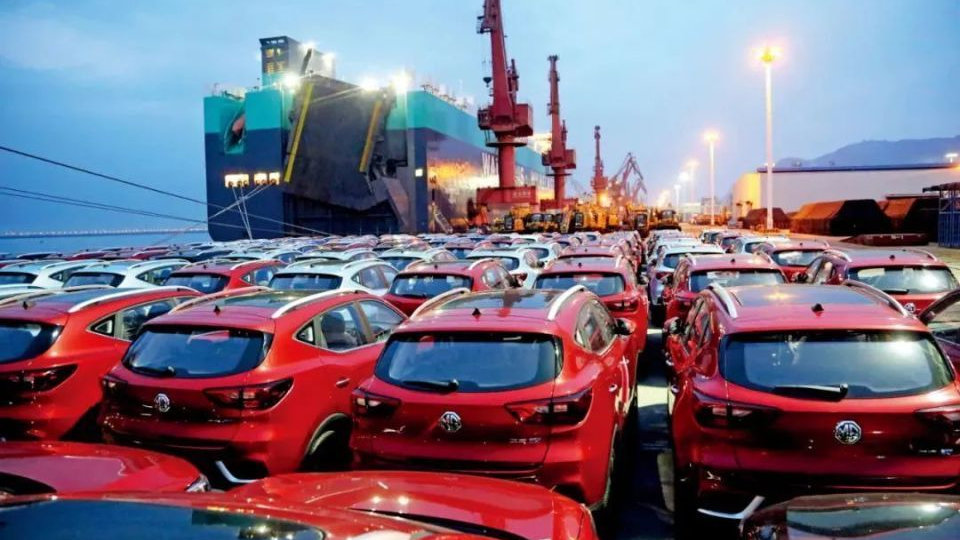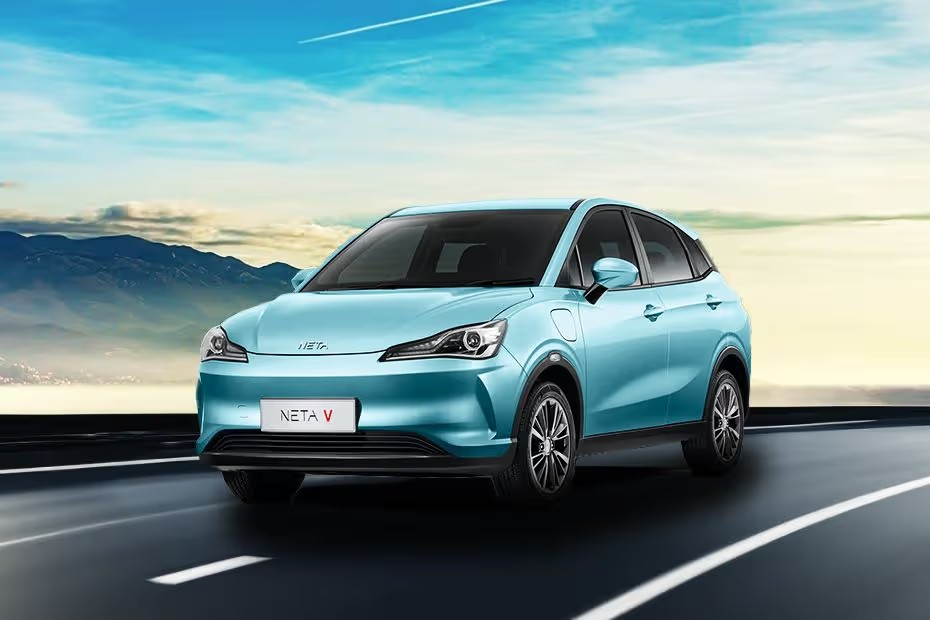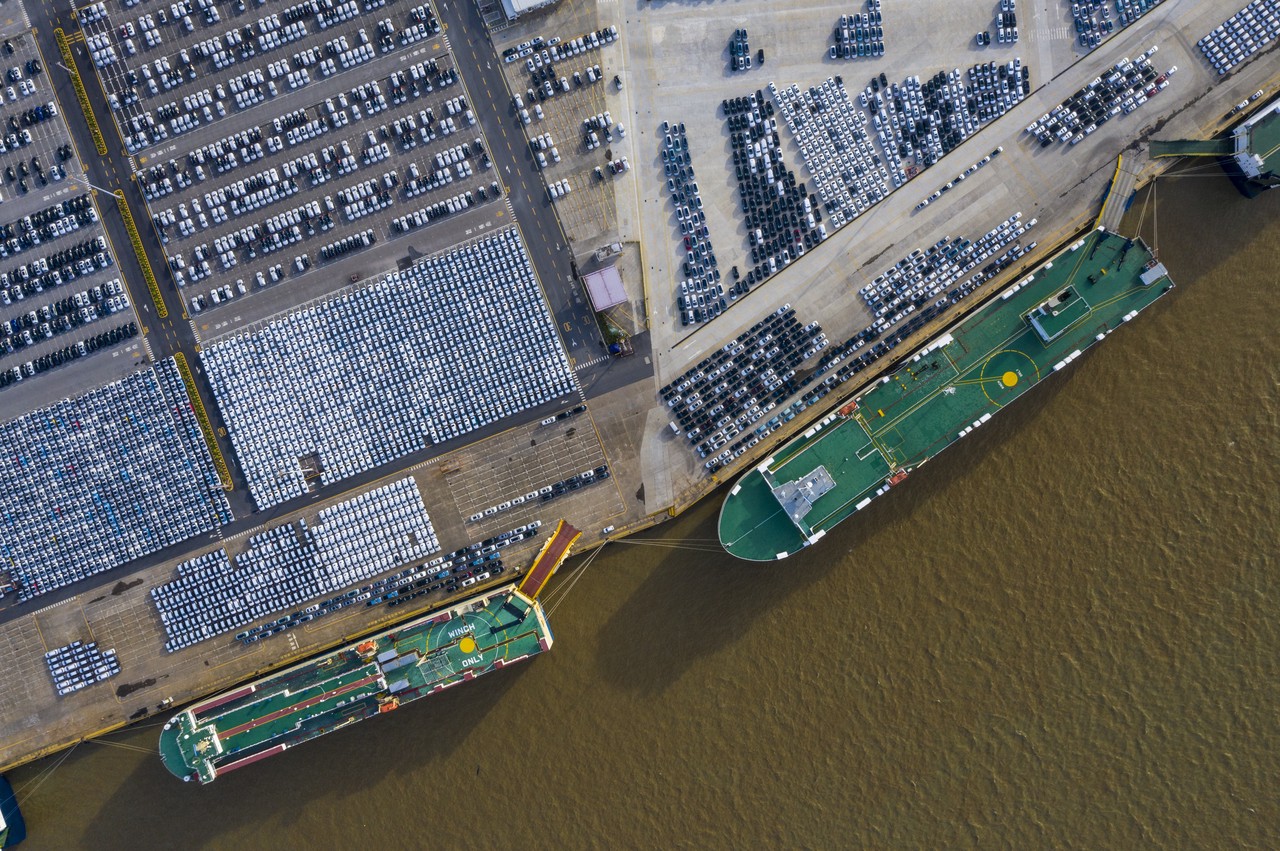China will impose controls on the export of pure electric vehicles, hoping to improve the quality of exported vehicles and avoid price wars.
 MichaelSep 29, 2025, 11:27 AM
MichaelSep 29, 2025, 11:27 AM

[PCauto] The Chinese government recently announced that starting from January 1, 2026, it will implement export license management on battery electric vehicles (BEVs).
This policy covers the mainstream categories of China's electric vehicle exports. From January to August 2025, such vehicles accounted for nearly half of the total electric vehicle exports (approximately 990,000 vehicles).
The regulation of BEV exports by the Chinese government means that the export of Chinese electric vehicles will shift from rapid expansion to standardized development.
The new policy aims to address regulatory gaps in BEV exports
Previously, the export of BEV passenger cars was not specifically managed, leading to a series of irregularities.
Some companies disguised “0-kilometer second-hand vehicles” registered domestically as new cars for export, evading standard tariffs and lowering the resale value of Chinese electric vehicles (the resale value of Chinese electric vehicles was 48.5% in 2024 and has further declined since 2025);
Other companies, in order to capture market share, were willing to cut prices, even selling at a loss, creating an arbitrage model of exporting and re-importing, disrupting both domestic and international market order;
A small number of enterprises, in order to reduce costs, used substandard materials and processes, leading to battery safety hazards and non-compliant vehicle performance issues in overseas markets.
China imposes three measures on the export of pure electric vehicles
First is subject restriction: only automobile manufacturing enterprises and their authorized operating enterprises can apply for licenses, and they can only export products under their own brands. This aims to prevent OEM production or unauthorized exports.
Second is qualification requirements: Enterprises must meet specific qualifications, including being listed in the MIIT's Announcement on Vehicle Manufacturers and Products, holding valid China Compulsory Certification (3C), and possessing overseas service capabilities commensurate with their export volume. Based on the number of overseas after-sales service outlets and annual export volume, enterprises are divided into five categories. Category 1 enterprises must set up at least 50 overseas after-sales service outlets and have an annual export volume of no less than 10,000 vehicles; requirements for the number of outlets and export volume decrease sequentially for categories 2 to 5.
The third measure outlines the application and approval process for the export license. Enterprises must submit information about overseas service outlets and export vehicle models through the Ministry of Commerce's online system. After preliminary review by provincial commerce departments and approval by the Ministry of Commerce, they can use the export license to complete export procedures.

The rapid growth of China's electric vehicle industry comes with intense internal competition
From January to August 2025, China's electric vehicle exports reached 2.02 million units, a year-on-year increase of 51%. However, some enterprises, in pursuit of sales volume, compromise on quality and brand integrity, leading to an increasingly entrenched label of low-priced and substandard products. 
The deteriorating international trade environment is compelling China to regulate its export activities. The European Union launched an anti-dumping investigation into Chinese pure electric passenger vehicles in May 2025, with preliminary findings expected in December 2025. Potential tariff rates could be as high as 17% to 38%.
Furthermore, the U.S. Inflation Reduction Act mandates the use of battery raw materials sourced from the U.S. or its free-trade partners, which restricts the supply chain options for Chinese automakers in the American market.
China's motorcycle industry serves as a cautionary tale in this context. In the 1990s, Chinese motorcycles captured the Southeast Asian market with low prices but eventually lost ground to Japanese brands due to a lack of unified quality standards and after-sales service networks. This led to a dramatic decline in market share from a peak of 70% to less than 10%, and the reputation for being low-cost but inferior-quality has persisted.
A primary goal of the new policy is to avoid repeating these errors. Domestically, the Chinese government aims to phase out enterprises that engage in cut-throat, low-quality competition. Internationally, China seeks to demonstrate that its electric vehicles compete on the basis of compliance with international standards and superior quality, rather than through dumping practices.

New Policy to Steer Chinese Automakers from Price Wars to Value Competition
For companies like BYD, Chery, and NIO that have already established overseas service networks and localized production, the new policy presents an opportunity to further expand their market share.
For example, BYD has constructed a passenger car factory in Hungary (scheduled to commence production by the end of 2025) and has optimized its safety standards for the Japanese market. These foundational efforts, supported by the new policy, will enable BYD to access high-end overseas markets more seamlessly.
Chery's manufacturing facility in Spain is currently under construction, and this localized production will help it circumvent EU tariff barriers. NIO, for instance, has modified the body structure of its ET7 model to meet the safety standards of the U.S. IIHS crash test, thereby enhancing its crash safety ratings.
The compliant export practices and localized presence of Chinese automakers are also stimulating the development of the EV supply chain in Southeast Asia.
BYD's plant in Thailand, for instance, has spurred the growth of a local supplier base, with 12 component suppliers now operating in areas like battery materials and motor components. Similarly, Wuling's collaboration with local Indonesian partners to set up a battery pack assembly plant has filled a critical gap in Indonesia's local EV supply chain.
For these forward-looking companies, the policy is perceived not as a constraint, but as a form of protection. They are poised to capitalize on a more regulated and predictable market to strengthen their brand equity and enhance their products' pricing power.
In the past, Chinese electric vehicle exports competed primarily through price wars to gain market share. The new policy, however, is now pressing companies to transition toward competition based on technological innovation and service quality, thereby accelerating their global industrial layout.
If any infringement occurs, please contact us for deletion
Trending News

The fifth-generation Geely Emgrand car photos released, with upgrades in body size and power system
As a family sedan with cumulative sales exceeding 4 million units in China, the new generation Emgrand will further consolidate Emgrand's competitive position in the sedan market through stronger product capabilities.

BYD Sealion 7 is not only cheaper than Tesla Model Y, what other differences do they have?
Is it better to buy the BYD Sealion 7 or the Tesla Model Y? This really makes one a bit hesitant, but before you make a decision, I recommend you take a good look at this article.

Toyota Land Cruiser FJ did not disappoint, the most anticipated civilian off-road vehicle is back.
Since its birth in 1951 under the name Toyota BJ, the Land Cruiser series has accumulated sales of approximately 12.15 million units in over 190 countries and regions worldwide, becoming a global off-road icon spanning more than 70 years.

The all-new Proton X50 has sold over 6,000 units in a month and a half since its launch, becoming the champion in its segment.
Market data shows that the Proton X50 achieved a delivery volume of 999 units within the first five working days after its launch, and by the end of July, its production scale reached 2,000 units.

Toyota Corolla Cross mid-term facelift in China, featuring a new front face and interior design
Toyota released the mid-cycle facelift of the Toyota Corolla Cross in China. In China, this vehicle produced by GAC Toyota is called Frontlander, and it is the same model as the Toyota Corolla Cross produced by FAW Toyota.
Popular Cars
Car Compare
Model Year
car model

